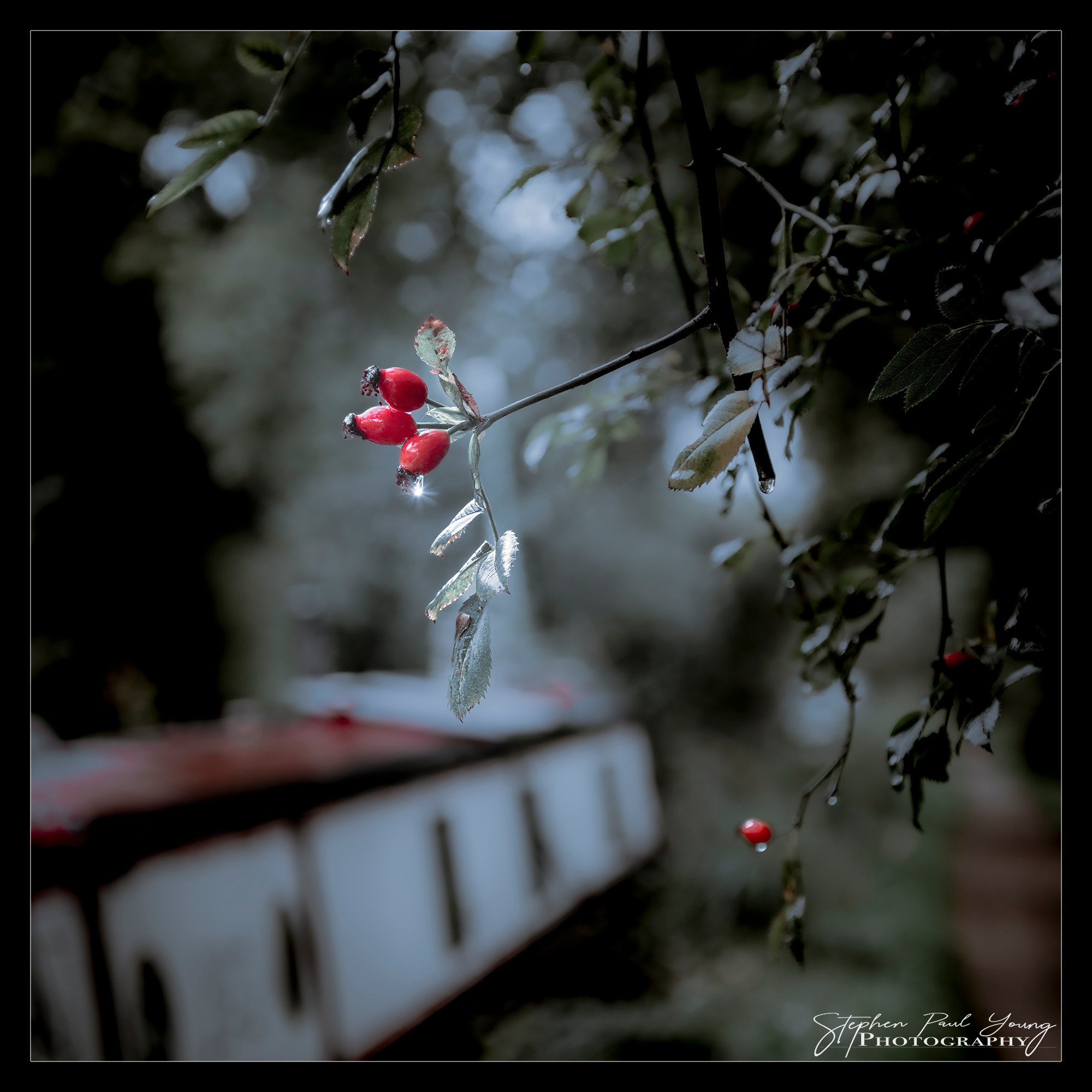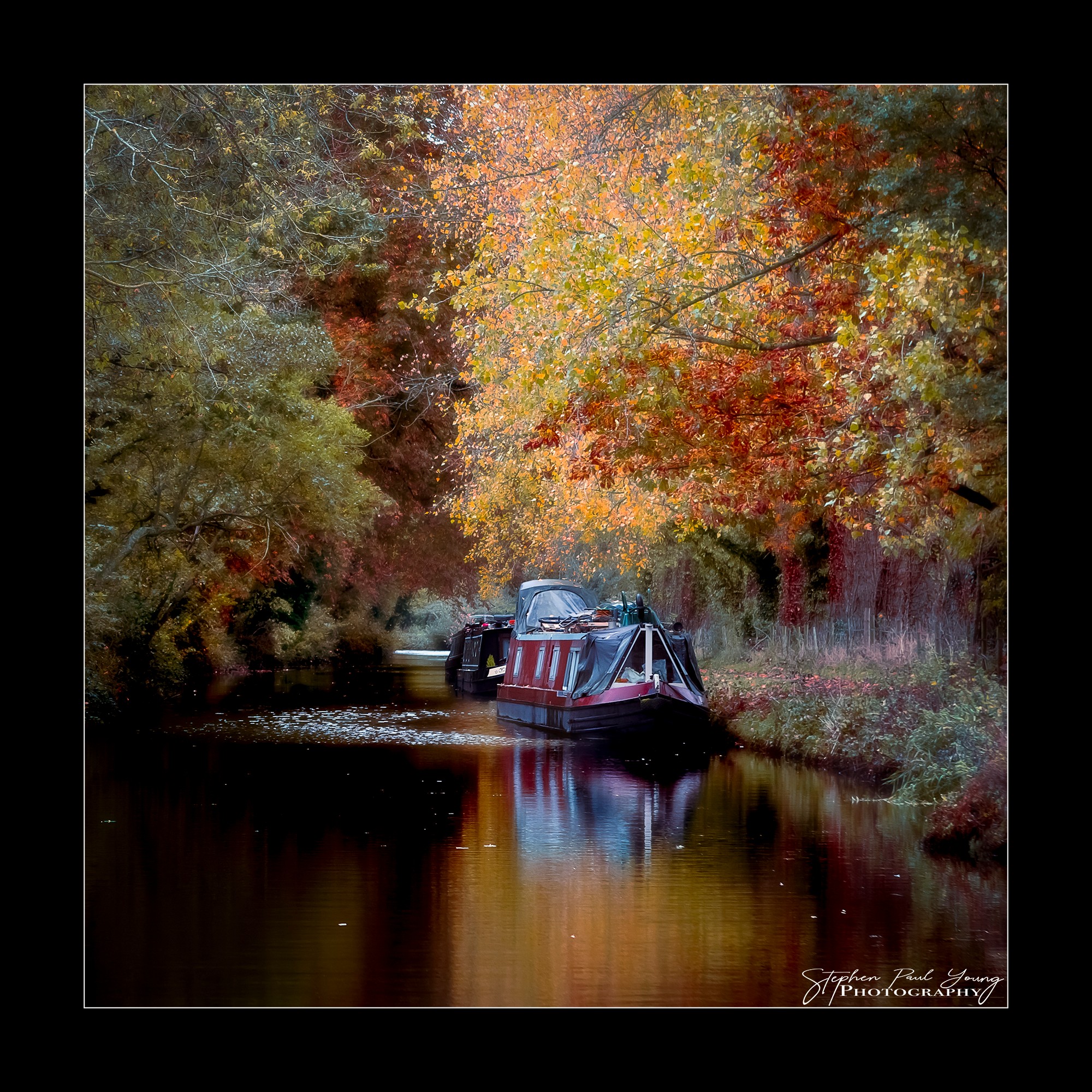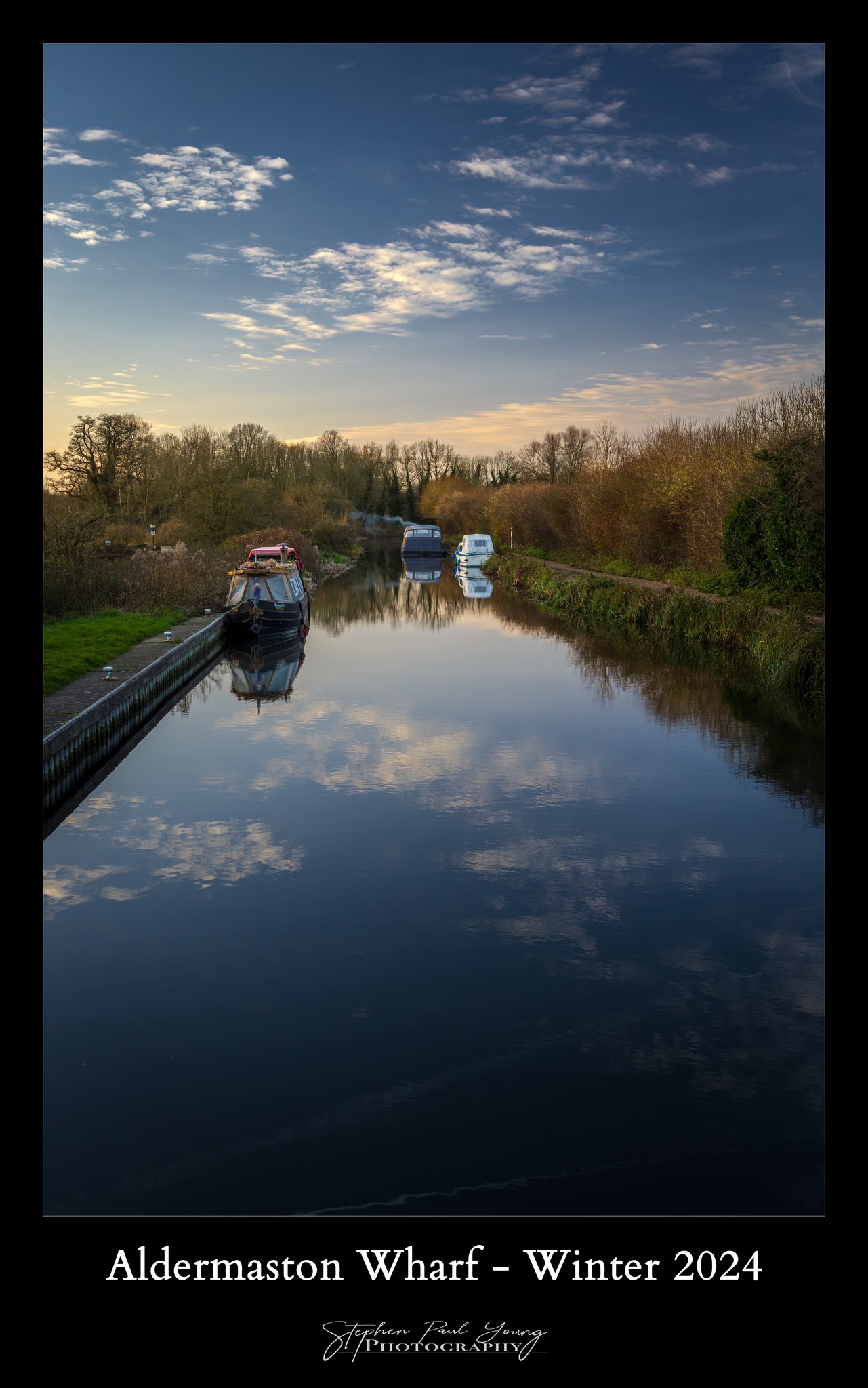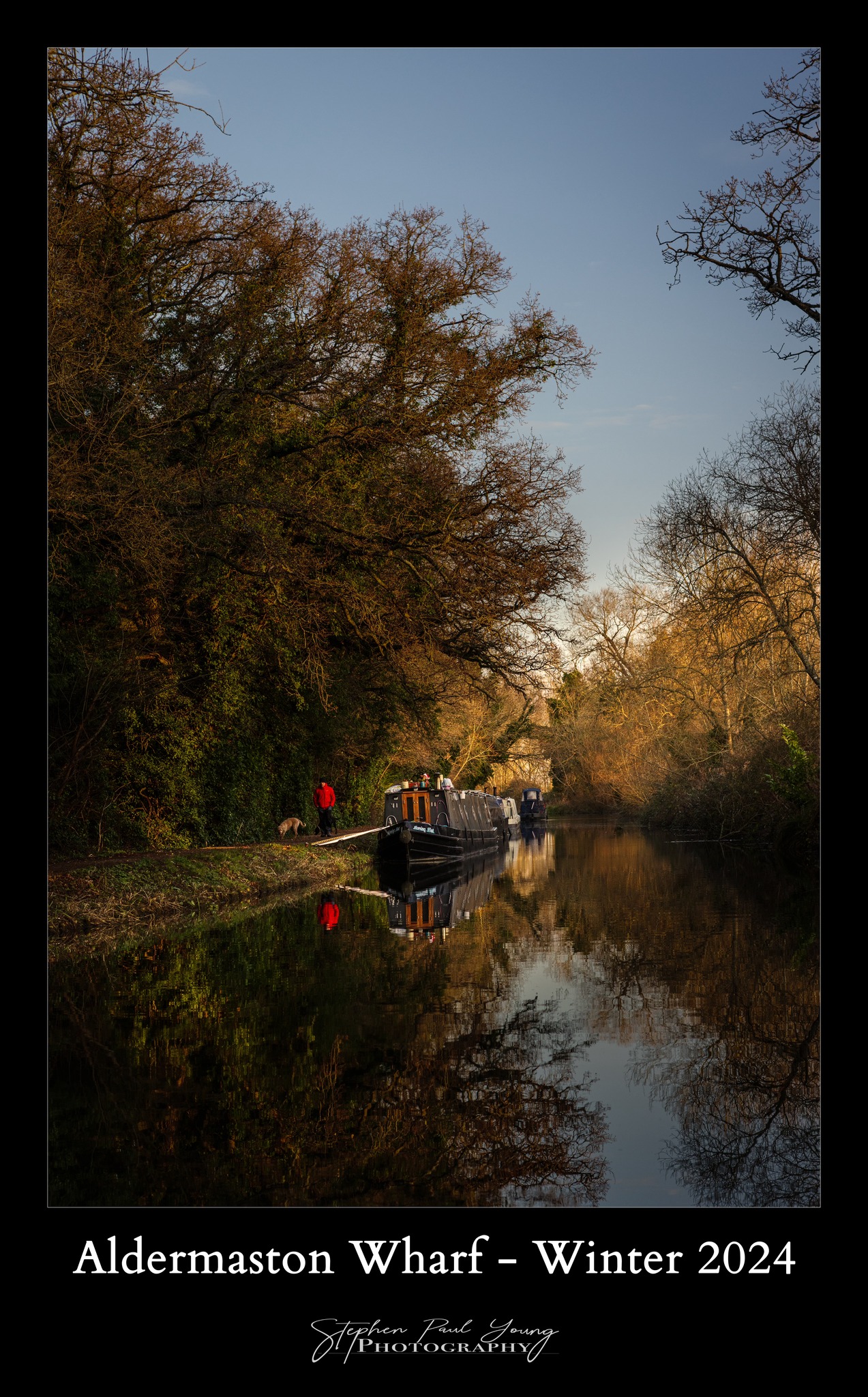Embracing the Season: Winter and Low Light Photography Settings
As I sit here in my cosy home in rural North Hampshire, gazing out of the window, I’m reminded that winter is upon us in the United Kingdom. The days are growing shorter, and the familiar scenes of Autumn are slowly fading into the embrace of this enchanting season.
The countryside transforms into a winter wonderland, and it’s a magical time for photography enthusiasts like me. I’ve had the privilege of experimenting with various photography techniques and settings, particularly delving into the realm of low light photography settings.
Over time, I’ve learned the art of optimising these settings, a crucial skill for any photographer, especially during the winter months when daylight is at a premium. In this blog post, I’d like to take you on a journey through my experiences and discoveries in low light photography, specifically exploring how these settings can help us embrace the unique challenges and opportunities that winter brings to us here in Hampshire and the wider UK.
So, if you’re passionate about photography and keen to make the most of the winter season, join me as I share some basic settings for low-light photography that I’ve learned along the way. Together, we’ll unlock the secrets of capturing the magic of winter with our cameras.
Remember; In the realm of low light photography, it’s important to remember that there are no ‘best camera settings for low light photography‘, as the ideal configuration can vary depending on the unique conditions and your artistic vision.
The Arrival of Winter
Winter in rural North Hampshire is a poetic transformation of the landscape. It’s when the world around us changes, not just in appearance, but in its very essence. The air becomes crisp, the days grow shorter, and nature begins its slumber under a blanket of frost or snow. It’s a season that paints a different canvas, with a colour palette that ranges from the purest white of snow to the deep grays of our overcast skies. Winter is a time of hushed beauty, where stillness prevails, and the world seems to hold its breath.
B. How Winter Affects Photography
Winter’s arrival heralds unique challenges and opportunities for photographers. The first noticeable change is the quality of light. Gone are the long, golden hours of summer. Instead, we are presented with soft, diffused light that adds a touch of magic to our images. But it also means less light to work with, and that’s where the magic of low light photography settings comes into play.
The landscape transforms, offering a stark yet captivating contrast to the lush greens of summer. Snow-covered fields, frosty branches, and frozen lakes create a canvas of natural beauty waiting to be captured through the lens. Winter gives us a chance to see our surroundings in a new light and to uncover the hidden charm of the season.
C. Transitioning from the Bright and Sunny Seasons to the Low Light of Winter
Transitioning from the bright and sunny seasons to the low light of winter requires a shift in mindset and a different approach to photography. In summer, you may be accustomed to using faster shutter speeds and lower ISO settings, but in winter, you’ll find yourself experimenting with longer exposures, higher ISOs, and making the most of available light.
Winter photography beckons us to embrace the cold and seek out the hidden beauty in the shorter days and frosty landscapes. It’s a time to trade the vibrancy of sunlit scenes for the subtle nuances of low light photography. As we adapt to the change in seasons, we learn to appreciate the art of capturing the serene and often mysterious essence of winter.
In the next sections of this blog post, we’ll delve deeper into the techniques and settings that allow us to make the most of these low light conditions and transform the challenges of winter into remarkable photographic opportunities.
The Beauty of Winter Photography

A. Highlighting the Unique and Captivating Aspects of Winter Photography
Winter photography, to me, is like capturing a dreamy tale spun from frost and snow. There’s a unique charm in the stillness of the season, as if time has paused to allow us to savor its beauty. The world transforms into a serene wonderland, where every photograph tells a story of the quietude and tranquility that winter brings.
B. Snow and Ice: Natural Elements that Enhance the Aesthetics

Snow and ice are not just weather conditions; they’re artists, meticulously crafting their masterpieces across the countryside. Snow blankets the landscape, offering a pure canvas for your photography. It softens harsh edges and adds an element of purity that’s hard to replicate in any other season. Ice, on the other hand, turns ordinary scenes into something extraordinary. Icicles, frozen waterways, and frost-laden trees become nature’s sculptures, waiting to be captured through the lens.
C. The Charm of Winter Landscapes
Hampshire, with its idyllic countryside, is a perfect canvas for winter photography. The Kennet and Avon Canal, with its still waters reflecting the frost-kissed trees, provides a mesmerising sight. Morgaston Wood and Watership Down are equally enchanting, offering diverse backdrops that range from ancient woodlands to rolling hills.

Morgaston Wood, with its ancient oaks and mossy undergrowth, is a place where the past meets the present. The intertwining branches create a labyrinth of shadow and light, making it an intriguing subject for winter photography. Watership Down, made famous by Richard Adams’ novel, is a vantage point that rewards photographers with sweeping views of the Hampshire countryside, especially when cloaked in the delicate hues of winter.

These locations in Hampshire serve as perfect settings to explore the essence of winter. They showcase the quiet beauty that can be found in even the most ordinary of places during this season. In the upcoming sections, I’ll share some tips and techniques on how to capture the charm of these landscapes and make the most of the low light conditions that define winter photography.
The Challenge of Low Light Photography
A. Exploring the Challenges Photographers Face in Low Light Conditions
Low light photography is like a thrilling adventure filled with its own set of challenges and rewards. When the sun sets early and the world is bathed in subtle, muted hues, photographers face the exciting task of making the most of diminished light. The primary challenge here is achieving the right exposure while keeping noise and blur at bay. This requires mastering the intricacies of low light photography settings.
B. Understanding the Impact of Reduced Daylight

In winter, the reduced daylight hours are one of the most apparent challenges. The sun often shies away before we’ve had a chance to capture the perfect shot. This means that we need to be quick on our feet, embracing the precious moments when natural light graces our scenes. Understanding the angle and quality of the available light becomes crucial.
C. The Importance of Adapting to the Situation
Photography, in its essence, is about adaptability. When faced with low light conditions, we need to be flexible in our approach. This might mean adjusting the ISO settings to introduce some digital light, slowing down the shutter speed to let in more light, or utilising artificial light sources judiciously. The key is to embrace the challenges and see them as opportunities for creative experimentation.
Key Low Light Photography Settings
A. Essential Camera Settings for Low Light Conditions
Low light photography is an art that hinges on mastering your camera’s settings to make the most of limited illumination. Let’s dive into the key components that form the foundation of successful low light photography:
- ISO Settings: ISO, or International Organisation for Standardisation, is the setting that determines the camera’s sensitivity to light. In low light situations, you may need to increase the ISO to capture more light, but be cautious not to go too high as it can introduce digital noise, affecting your image quality.
- Aperture Adjustments: The aperture setting controls the size of the lens opening. In low light, consider using wider apertures (lower f-numbers) to allow more light to enter the camera. This can result in a shallower depth of field, which can be creatively used for artistic effects.
- Shutter Speed Considerations: Adjusting the shutter speed is crucial in low light conditions. Slower shutter speeds can capture more light, but they can also introduce camera shake. Using a tripod or other stabilisation methods is essential for longer exposures.
B. The Role of Equipment and Accessories
Low light photography often benefits from the use of additional equipment and accessories that help overcome the challenges posed by reduced light. Here are some essential tools in a low light photographer’s arsenal:
Tripods: A stable platform for your camera is indispensable in low light situations, especially when using slower shutter speeds to capture more light. It eliminates the risk of camera shake and allows for long exposures.
External Flash: An external flash unit can provide additional light when natural light is insufficient. You can adjust the flash’s intensity and direction to achieve the desired effect.
Remote Shutter Release: To minimize any potential camera shake when taking long exposure shots, a remote shutter release can be a valuable accessory. It allows you to trigger the camera without physically touching it.
Mastering low light photography settings and utilising the right equipment and accessories opens up a world of creative possibilities, allowing you to capture the magic of winter and the subtle beauty of reduced light conditions. As we continue our exploration of winter photography, these settings and tools will prove invaluable in creating stunning images that truly reflect the essence of the season.
Table: ISO Settings, Aperture, and Outcome
| ISO Setting | Aperture (f-stop) | Outcome |
|---|---|---|
| Low (e.g., 100) | Wide (e.g., f/2.8) | Fine details, shallow depth of field |
| Medium (e.g., 400) | Moderate (e.g., f/5.6) | Balanced exposure, some depth of field |
| High (e.g., 1600) | Narrow (e.g., f/16) | Brighter image, greater depth of field |
Tips and Techniques for Winter Photography
A. Techniques for Capturing the Essence of Winter
Winter is a season of enchantment, and with the right techniques, you can capture its essence in your photographs. Here are some approaches that have worked wonders for me:
- Silhouettes Against the Winter Sky: Silhouettes can be incredibly evocative in winter photography. Use the contrast between the dark, distinct shapes of trees, buildings, or people against the soft, hazy backdrop of the winter sky to create captivating compositions. This technique often lends a sense of mystery and drama to your photos.
- Long Exposures to Capture Snowfall: Snowfall is a magical phenomenon, and you can make it even more mesmerising through long exposures. Slow down your shutter speed to allow snowflakes to streak across your frame, creating a sense of movement and ethereal beauty. This technique can turn an ordinary winter scene into a whimsical wonderland.
- Creative Use of Artificial Light Sources: Winter nights offer a unique canvas for experimenting with artificial light. Whether it’s street lamps, car headlights, or holiday decorations, these light sources can add a warm and inviting contrast to the cold, wintry surroundings. Play with your exposure settings to make these artificial lights pop, creating a magical atmosphere.
B. Working with Reflections and Textures
Winter landscapes often come with beautifully reflective surfaces and intriguing textures. Bodies of water, frozen lakes, and icy paths can provide captivating reflections. Experiment with compositions that capture the mirror-like quality of these surfaces, doubling the visual impact of your scenes. Additionally, don’t forget to showcase the intricate textures of snow-covered branches, frost, or the unique patterns that winter weaves across nature.

C. Importance of Timing and Patience in Winter Photography
Winter, with its fleeting moments of perfect light and atmospheric conditions, demands a great deal of patience and a keen sense of timing. Be prepared to wait for that soft, diffused light during the golden hour. Wake up early to capture the tranquility of a snowy morning. Seize the opportunity when the sun breaks through the clouds, casting a warm glow on a frosty landscape.
In winter photography, every second counts, and the results can be truly rewarding. The essence of this season lies in its subtle details and ephemeral beauty, waiting for those who are willing to wait and capture it through the lens. So, as we continue our exploration of the charm of winter photography, keep these techniques in mind, and let your creativity unfold amidst the serene and enchanting backdrop of winter’s wonderland.
Post-Processing for Winter Photography
A. The Role of Post-Processing in Enhancing Winter Images
Post-processing is where the magic of photography truly unfolds. It’s the digital darkroom where you can refine and enhance your winter images to make them even more captivating. Here, we’ll explore how post-processing plays a vital role in perfecting your winter shots.
B. Adjusting Exposure, Contrast, and Colour Balance
Winter scenes often have a delicate balance of light and shadow, and sometimes the camera doesn’t capture it exactly as our eyes perceive it. Post-processing allows you to fine-tune exposure to bring out the details hidden in shadows and retain the highlights. Adjusting contrast can give your photos more depth, and tweaking the colour balance ensures that the whites are truly white, not tinged with unwanted hues. It’s about refining the image to match your artistic vision and the unique mood of the season.
C. Adding the Finishing Touches to Bring Out the Winter Magic
To make your winter images truly enchanting, don’t shy away from adding some artistic flair during post-processing. You can enhance the sense of serenity by softening the overall look, or you might choose to intensify the details to highlight the intricate beauty of frost and snowflakes. The possibilities are endless, and it’s where your creativity can shine as you bring out the winter magic.
Table: Post-Processing Software Choices
| Software | Pros | Cons |
|---|---|---|
| Adobe Lightroom | User-friendly interface, extensive editing tools, great for colour correction and tonal adjustments | Subscription-based pricing model may be costly |
| Adobe Photoshop | Powerful editing capabilities, complete control over fine details and advanced compositing | Steeper learning curve, may be overkill for basic edits |
| Capture One | Exceptional colour grading and raw processing, precise editing tools, strong tethering support | Relatively expensive, learning curve for beginners |
| DxO PhotoLab | Excellent noise reduction, automated features for quick enhancements, user-friendly | Limited editing capabilities compared to others |
| Luminar | AI-driven enhancements, user-friendly, wide range of creative filters | May lack the depth of manual control for advanced users |
Choosing the right post-processing software is a personal decision based on your editing style and preferences. Each of these options offers a unique set of features and capabilities, so it’s worth experimenting with a few to find the one that complements your workflow and helps you bring out the full potential of your winter photography.
Inspiration from Expert Photographers
A. Showcasing the Work of Renowned Photographers in Winter Settings
Winter photography is an art, and like any art, it’s enriched by the wisdom and expertise of those who have mastered it. To kickstart our inspiration journey, let’s take a look at the breathtaking work of a few renowned photographers who have an innate talent for capturing the enchanting beauty of winter.
1. Ansel Adams – Ansel Adams is a legendary figure in the world of landscape photography. His black and white photographs of winter landscapes, particularly in the Sierra Nevada, are iconic. You can explore his work on the Ansel Adams Gallery website here.
2. Art Wolfe – Art Wolfe is known for his stunning wildlife and nature photography. His winter wildlife shots are nothing short of magical. Visit his official website here to see his incredible winter portfolio.
B. Exploring Their Techniques and Insights
One of the best ways to learn and improve as a photographer is by studying the techniques and insights of those who have walked the path before us. Let’s delve into what makes these photographers’ work so exceptional.
1. Ansel Adams – Adams’ meticulous attention to detail, composition, and use of long exposures allowed him to capture the mesmerising beauty of winter landscapes. His use of black and white photography heightened the contrast, making his scenes appear timeless and almost otherworldly. His dedication to scouting locations and timing his shots perfectly is a lesson in patience and perseverance.
2. Art Wolfe – Art Wolfe’s winter wildlife photography is a masterclass in capturing the behavior and grace of animals in the cold season. His insights into understanding animal behavior and waiting for that perfect moment to click the shutter are invaluable. He often uses telephoto lenses to respect the animals’ space and capture them in their natural habitat.
C. How Their Work Can Inspire Our Own Winter Photography Endeavors
Studying the work of photographers like Ansel Adams and Art Wolfe can inspire us to refine our craft and infuse our own winter photography with newfound creativity. Take the time to explore their portfolios, analyze their compositions, and consider how their techniques can be applied to your own photography. Let their work serve as a well of inspiration as you embark on your own winter photography adventures.
Conclusion
A. Summarising the Significance of Low Light Photography Settings in Winter
As we draw the curtains on our exploration of winter photography, one thing stands out clearly: the significance of understanding and mastering low light photography settings cannot be overstated. The subtlety of winter’s light, the hushed beauty of snow-covered landscapes, and the fleeting moments of perfect illumination make it a season like no other. Low light settings become the key to unlocking the true essence of winter in your photographs.
B. Encouraging Photographers to Embrace the Challenges and Beauty of the Season
Embracing winter as a photographer means embracing its unique challenges and rewards. The early sunsets, the frosty chill, and the scarcity of light might seem daunting, but they offer a canvas of endless creativity. So, I encourage all fellow photographers to bundle up, step outside, and seek out the beauty that winter offers. The charm of winter landscapes is a treasure waiting to be discovered, and it’s worth every cold fingertip and chilly nose.
C. Reiterating the Importance of Understanding and Applying Key Low Light Photography Settings
In conclusion, understanding and applying key low light photography settings is the compass that guides you through the winter wonderland. Adjusting ISO, aperture, and shutter speed, along with the creative use of equipment like tripods and flash, is your toolkit to capture the enchanting beauty of this season. With the right settings and a touch of post-processing magic, your winter photographs can truly reflect the magic of the season.
So, as we bid farewell to this photographic journey through winter’s enchantment, remember that every photographer’s perspective is unique, and your interpretation of the season is a work of art waiting to be created. Whether you’re capturing the serene landscapes, the dancing snowflakes, or the cosy moments by the fireplace, let your camera be your guide, and may your winter photography endeavors be filled with creativity and wonder.
Call to Action
Go Out and Explore Winter Photography
Winter is a season that invites us to step out and capture its unique beauty. So, my fellow photographers, my call to action is simple: embrace the cold, embrace the season, and get out there with your camera. Explore the frosty landscapes, the softly falling snow, and the quiet moments that make winter truly magical. Your lens can be your window into a world transformed by winter’s touch.
Photography Resources and Communities for Further Learning
Photography is a journey of constant learning and improvement. To help you on your quest to master the art of winter photography, I’d like to share some valuable resources and communities. Consider joining photography forums, where you can exchange ideas, seek advice, and learn from experienced photographers. Websites like DPReview, Fred Miranda, or Photography Stack Exchange can be great places to start.
Share Your Own Winter Photography Experiences and Tips
Your winter photography journey is just as important as mine. I’d love to hear about your experiences and learn from your insights. So, don’t hesitate to share your own winter photography stories, tips, and challenges in the comments below. Let’s create a space where we can inspire and support each other on our photographic adventures.
Additional Resources
Links to Relevant Photography Blogs, Tutorials, and Gear Reviews
For those hungry for more knowledge and inspiration, there’s a vast world of online resources waiting for you. Some of my favorite photography blogs include PetaPixel, Fstoppers, and Digital Photography School. You can also explore tutorials on websites like Cambridge in Colour or YouTube channels like B&H Photo Video. To stay updated on the latest gear, reviews from DPReview and The Digital Picture are excellent references.
Winter Photography Workshops and Courses
If you’re looking to take your winter photography skills to the next level, consider enrolling in winter photography workshops and courses. They provide hands-on experience and expert guidance. Local photography clubs and organisations may offer winter-themed workshops and photowalks.
Networking and Sharing Winter Photography Experiences
Social media can be a powerful tool for networking and sharing your winter photography experiences. Platforms like Instagram, Flickr, and 500px are fantastic for showcasing your work and connecting with like-minded photographers. You can also join photography groups on Facebook, Reddit, and other platforms to engage in discussions and share your winter photography adventures with a global community.
So, with the call to action, additional resources, and the warmth of shared knowledge and experiences, I hope this winter becomes a season of growth and inspiration for your photography endeavors. Let’s capture the magic of winter, one click at a time!
Low Light and High ISO Photography by Simon d’Entremont
Like what you read? Fuel my next post with a coffee – hit that PayPal button and keep the caffeine flowing!
[wpedon id=77]